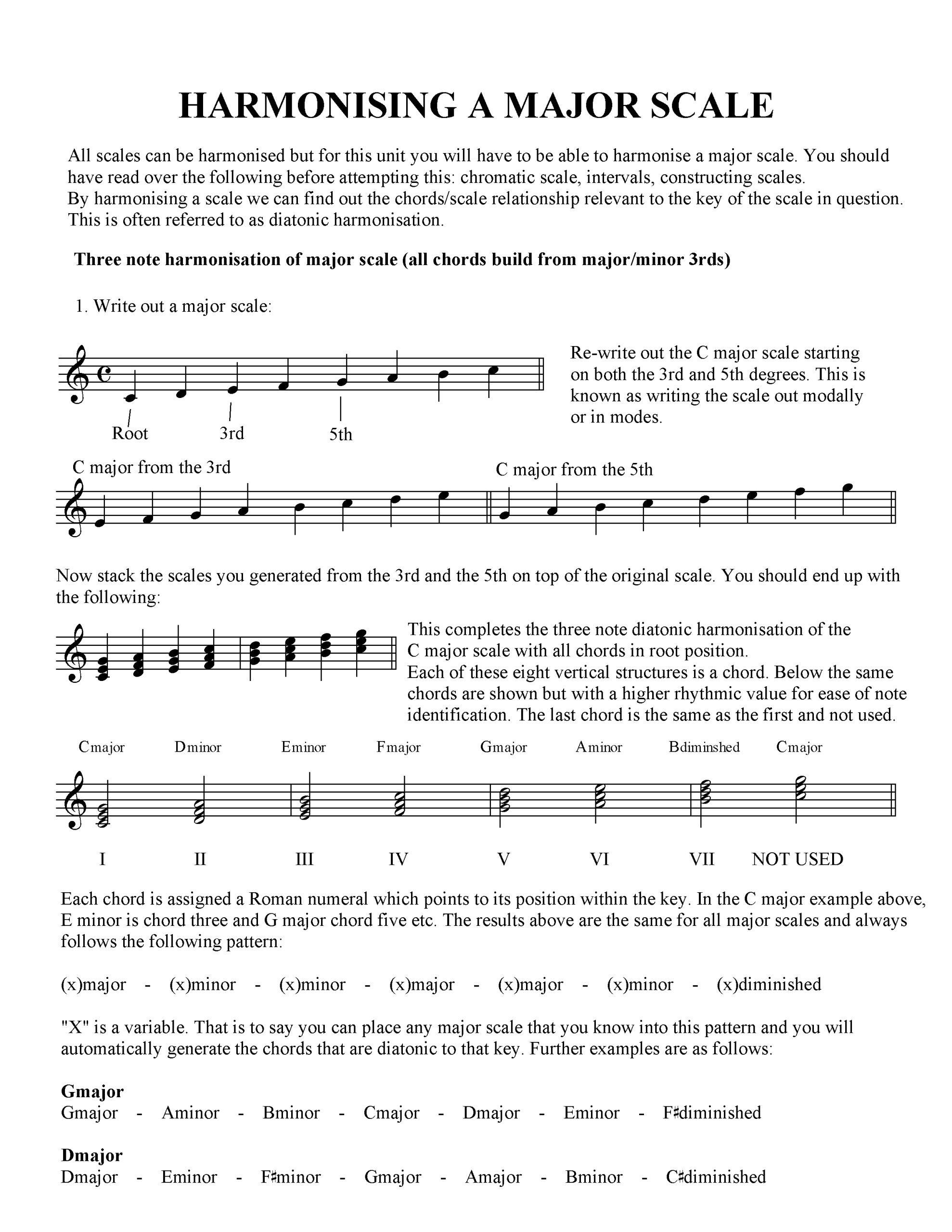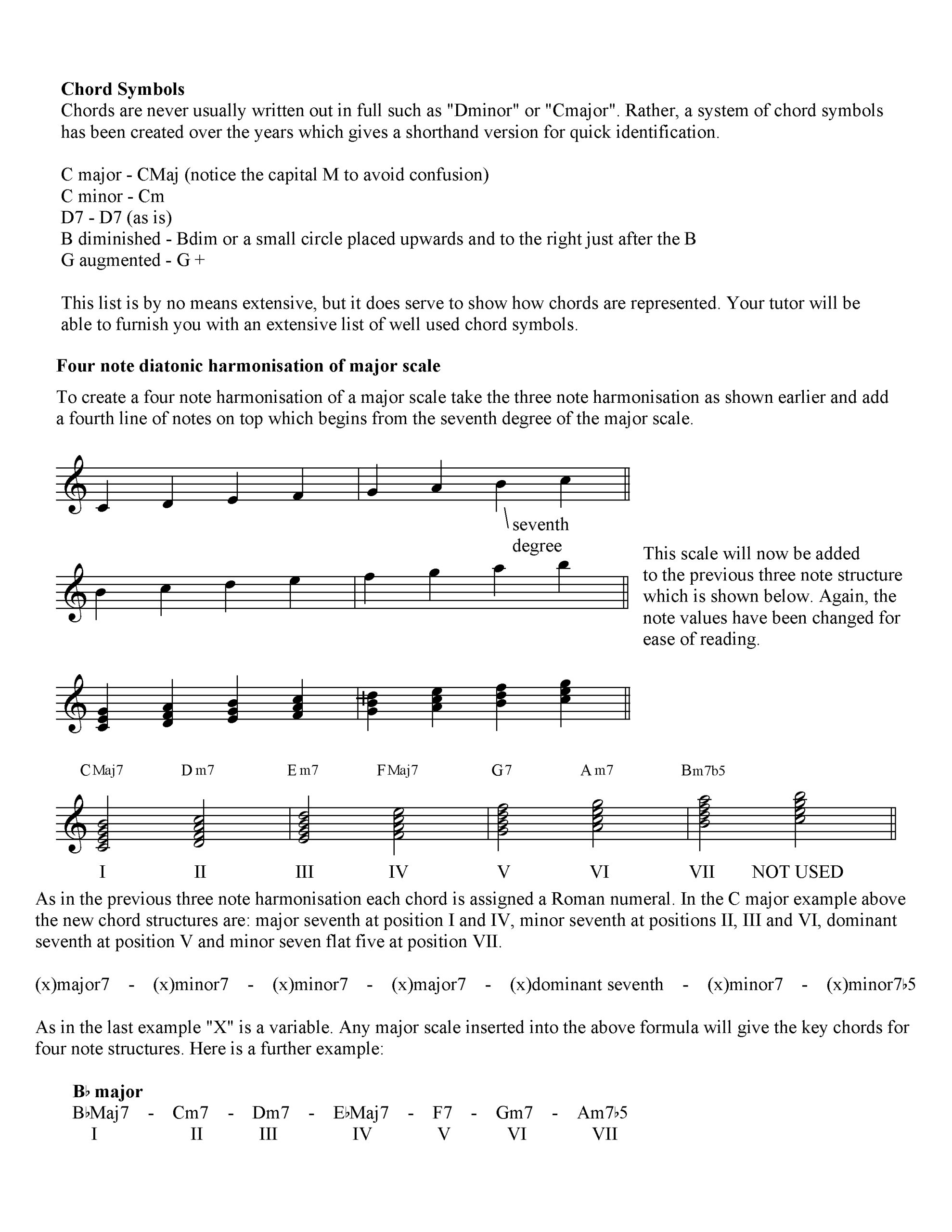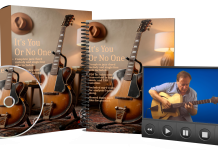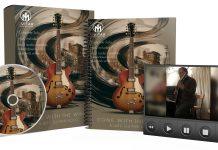This post may contain affiliate links. As an Amazon associate, Google associate as well as associate for other programs, Guitar & Music Institute may earn commissions from qualifying purchases.

In the exploration of upper scale extensions for enriching chord progressions, we’ll consider the evolution and application of chords that transcend the conventional triad structure by incorporating notes beyond the seventh–notably, the ninth, eleventh, and thirteenth.
The thirteenth chord represents the zenith of diatonic extension, encapsulating all seven tonal degrees. Historical perspectives reveal that while extended chords saw sparse use in the Baroque period, their prevalence escalated through the Classical and into the Romantic era, predominantly within dominant functions.
This discourse extends into the twentieth century and beyond, where in genres like jazz, jazz fusion, and funk, such chords are pivotal, often highlighted with added and altered notes for enhanced sonic texture and color. You will explore the nuanced roles these extensions play, from their foundational theoretical underpinnings in the works of eighteenth-century theorists to their expressive deployment in modern music, underlining the dynamic interplay between classical functional harmony and the pursuit of novel harmonic landscapes in contemporary compositions.
Understanding Extended Chords
Definition and basic types of extended chords
Extended chords are harmonies that include notes added beyond the traditional triad and seventh chords, encapsulating ninth, eleventh, and thirteenth chords. These chords introduce a fuller sound and are crucial for adding colour and complexity to music.
The ninth chord includes the root, third, fifth, seventh, and ninth. The eleventh chord adds an eleventh note on top of these, and the thirteenth chord, the farthest extension diatonically possible, includes all seven tonal degrees.
The historical evolution of extended chords
Extended chords were sparingly used in the Baroque era and began to appear more frequently during the Classical period. Their significant utilization was witnessed during the Romantic era, often fulfilling a dominant function. In the 20th century, these chords became fundamental in jazz, jazz fusion, and funk, reflecting a shift from functional to colouristic and textural roles in music.
The role of extended chords in modern music genres
In contemporary music genres, extended chords play a pivotal role in defining the sound and stylistic characteristics. They are especially prominent in jazz and jazz fusion, where they serve not just harmonic functions but also add richness and texture. In popular music genres, extended chords provide a means to escape the predictability of triads and seventh chords, contributing to a more sophisticated sonic palette.
The Components of Extended Chords
Breaking down the ninth, eleventh, and thirteenth chords
The ninth, eleventh, and thirteenth chords build upon the seventh chord by sequentially adding the ninth, eleventh, and thirteenth scale degrees, respectively. These chords offer a rich harmonic layering that can significantly enhance musical texture.
Commonly omitted notes and why
Not all notes in an extended chord are consistently voiced, with the fifth and any notes between the seventh and the highest note often omitted unless they are altered. These omissions are typically made to avoid harmonic clutter and to ensure clarity of the chord’s essential colour and function. In jazz contexts, the root and fifth are sometimes left to the bass instruments, focusing on the chord’s more characteristic tones.
Altered extensions and their impact on chord color
Altered extensions, such as a flat ninth or sharp eleventh, further increase the harmonic complexity and introduce a unique sonority to the music. These alterations impact the chord color significantly, creating tensions that are resolved or left hanging for expressive purposes.


Voice Leading in Extended Chords
Traditional rules during the common practice period
During the common practice period, voice leading rules for extended chords emphasized smooth, stepwise movement between the chord tones. Resolving the third of a chord upward to the tonic and the seventh downward was particularly stressed to maintain harmonic cohesion.
Modern approaches to voice leading with extended chords
Modern voice leading practices with extended chords have become more flexible, reflecting the evolution of musical styles. In jazz and contemporary music, voice leading often prioritizes the maintenance of chord color and texture over traditional resolution rules, allowing for more creative freedom.
Examples of effective voice leading in various music genres
Effective voice leading in music genres such as classical, jazz, and pop showcases the versatility of extended chords. In jazz, for example, innovative voice leading techniques contribute to the genre’s characteristic sound, enabling smooth transitions between complex harmonic structures.
Functional Harmony and Extended Chords
Dominant and secondary dominant functions
Extended chords often fulfill dominant or secondary dominant functions in functional harmony, with the inclusion of the seventh and higher extensions adding tension that seeks resolution. This characteristic makes them particularly effective in leading to the tonic or other target chords.
The concept of supposition and its application
Supposition, or the theoretical placement of a hypothetical bass note below the fundamental bass to consider ninth and eleventh chords as extensions of seventh chords, played a key role in 18th-century harmonic theory. This concept helped in the understanding and classification of extended chords within traditional harmony.
Circle progression resolutions with extended chords
Circle progressions, moving in fifths from one chord to the next, utilize extended chords for added harmonic interest and tension. The resolutions in these progressions often feature extended chords moving to resolve on a tonic or other stable chord, demonstrating their functional utility.
Extended Chords in Jazz and Fusion
The quintessential role of extended chords in jazz
Extended chords are fundamental in jazz, where they contribute to the genre’s characteristic harmonic richness and texture. They provide a basis for improvisation, offering a wide range of expressive possibilities.
Voicings for jazz piano and guitar
Voicings, or the specific arrangements of chord tones, for jazz piano and guitar often emphasize the chord’s color tones—such as the third, seventh, and any altered or added tones—over the foundational root and fifth, which might be implied or played by other instruments in the ensemble.
Innovative uses of extended chords by jazz legends
Jazz legends like Bill Evans and Wes Montgomery innovated in their use of extended chords, employing them not only for harmonic richness but also as a vehicle for melodic and thematic development within their compositions and improvisations.
Richer Chord Progressions with Extended Chords
Integrating extended chords into standard progressions
By integrating extended chords into standard chord progressions, composers and arrangers can inject a fresh sense of depth and complexity, transforming otherwise predictable progressions into captivating harmonic landscapes.
Creating tension and resolution with extended chords
Extended chords excel in creating tension due to their additional dissonances, which seek resolution. Creative use of these tensions and resolutions can significantly enrich a music piece’s emotional and expressive range.
Examples of progressions that effectively use extended chords
Progressions in genres ranging from classical to contemporary pop demonstrate the effective use of extended chords. These progressions often feature unexpected turns and a rich harmonic tapestry, highlighting the chords’ ability to add texture and complexity.
Extended Chords in Composition and Songwriting
Adding color and texture to melodies with extended chords
Extended chords offer composers and songwriters a powerful tool to add color and texture underneath melodies. By carefully selecting the chords’ extensions and alterations, a melody can be enhanced or contrasted in compelling ways.
The role of extended chords in thematic development
In thematic development, extended chords can provide harmonic variety and contrast, helping to differentiate sections and develop musical ideas. Their rich harmonic palette supports complex emotional narratives and thematic evolution.
Case studies: Songs and pieces that creatively use extended chords
Case studies of songs and compositions across genres underscore the creative use of extended chords in achieving specific musical effects. These examples often reveal how extended chords contribute to the unique character and emotional depth of a piece.
Altered Extensions for Unique Sonorities
Exploring flat ninth, sharp eleventh, and other alterations
Altered extensions like the flat ninth and sharp eleventh introduce unique sonorities that can dramatically alter a chord’s character. These alterations add tension and dissonance, opening up new avenues for creative expression.
The impact of altered extensions on chord progressions
In chord progressions, altered extensions can create heightened tension and more intricate resolutions. This increased harmonic complexity encourages innovative compositional techniques and richer emotional narratives.
Listening examples featuring unique altered extensions
Listening examples from jazz, classical, and popular music showcase how altered extensions can be used to craft distinctive harmonic landscapes. These examples highlight the creative potential of using extended and altered chords in composition and arrangement.

Techniques for Practicing Extended Chords
Exercises for mastering extended chord voicings
Practicing specific exercises designed to develop familiarity with extended chord voicings can greatly enhance a musician’s ability to incorporate these chords into their playing. Regular practice routines should include voicing variations and chord inversions.
Strategies for memorizing the fingerings and voicings
Memorizing the fingerings and voicings for extended chords requires systematic practice and repetition. Strategies may include visualizing the chord shapes, practicing in different keys, and using them in varied musical contexts.
Incorporating extended chords into personal playing styles
Musicians can incorporate extended chords into their personal playing styles by experimenting with their use in improvisation, composition, and arrangement. Personal exploration and creative application help integrate these chords seamlessly into one’s musical expression.
Resources and Further Study
Recommended books and articles on chord theory
For those wishing to deepen their understanding of extended chords, numerous books and articles on chord theory offer comprehensive insights into their construction, function, and application across musical styles.
Online courses and tutorials on extended chords
Online courses and tutorials provide accessible means to learn about extended chords, often with interactive lessons and personalized feedback. These resources cater to various skill levels, from beginners to advanced musicians.
Influential composers and musicians to study
Studying the works of influential composers and musicians who have masterfully used extended chords can serve as both inspiration and education. From jazz legends to classical composers, these figures demonstrate the limitless potential of extended harmony in enriching music.

This post may contain affiliate links. As an Amazon associate, Google associate as well as associate for other programs, Guitar & Music Institute may earn commissions from qualifying purchases.


























